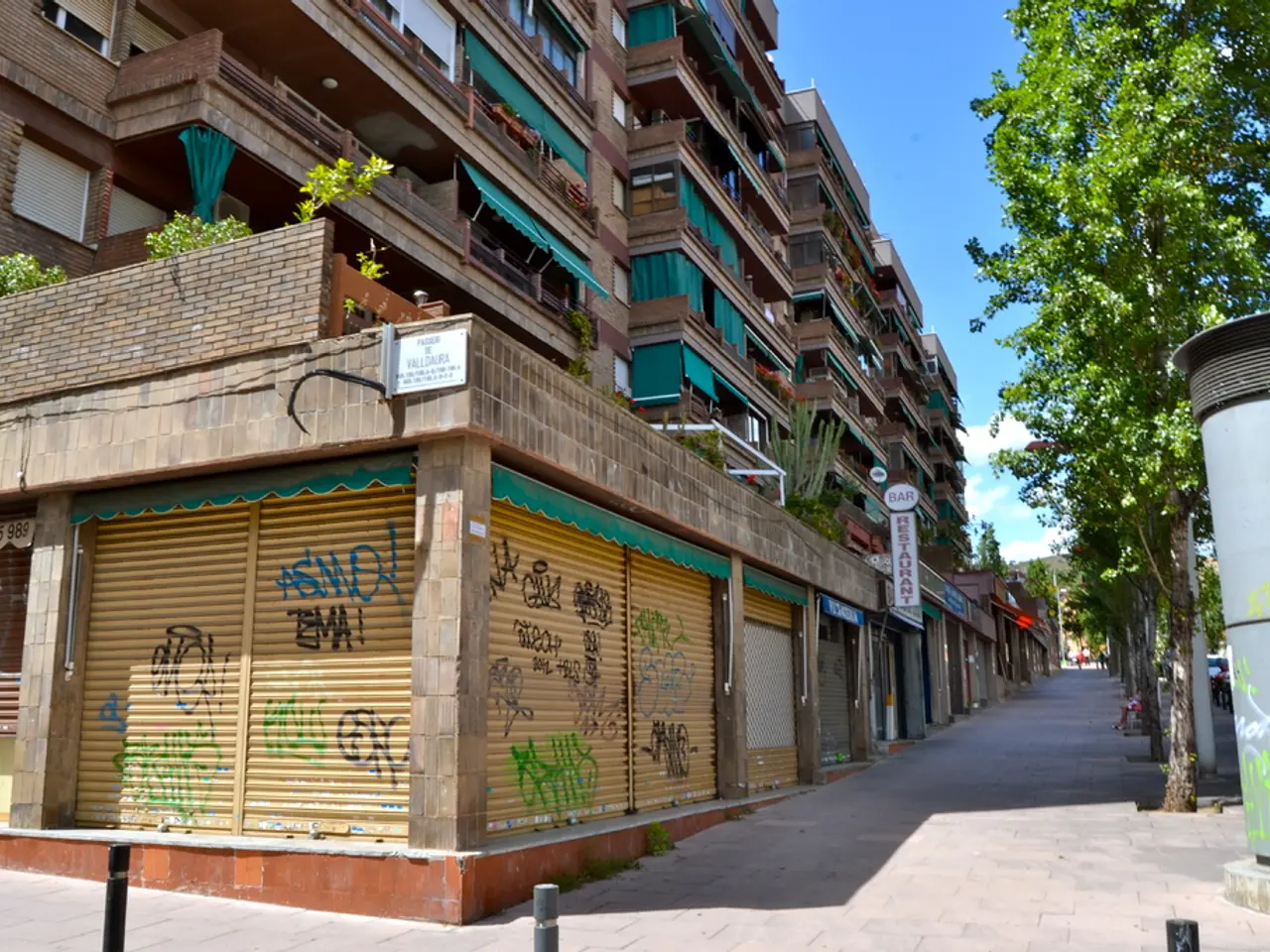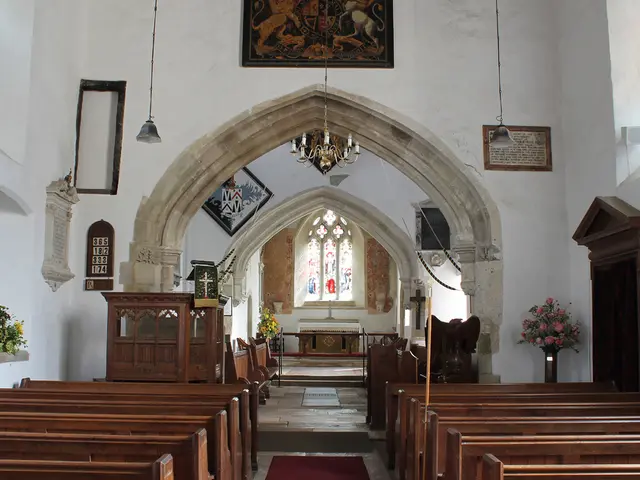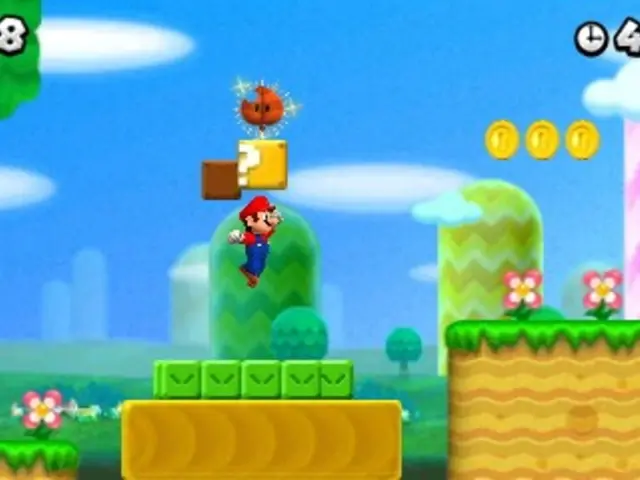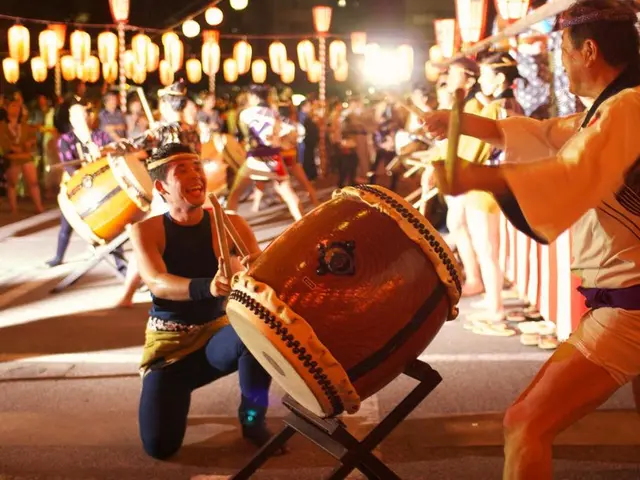Renowned London attraction, Barbican Conservatory, undergoes significant renovation through extensive restoration effort
The Barbican Conservatory, a significant part of the Barbican Centre in London, is currently undergoing a major restoration project. This initiative is part of phase one of the Barbican Renewal Programme, a long-term plan to secure the future of the grade-II listed site.
The focus of the restoration project is the redesign of the Conservatory and the adjacent Lakeside Terrace, applying principles of eco-brutalism. This approach blends ecological sensibility with the Brutalist architecture of the Barbican complex, enhancing both the plant environment and visitor experience.
The project, which is currently active, has been discussed since July 2025, indicating work close to or ongoing at this time. Allies & Morrison, Asif Khan Studio, environmental engineers Buro Happold, and multi-award-winning landscape designers Harris Bugg Studio are involved in the restoration. Charlotte Harris and Sybille de Cussy, co-founders of Harris Bugg Studio, will lead the project.
The Conservatory, opened in 1984, is the second-largest in London with over 1,500 species of plants and trees, featuring tropical and lush greenery integrated within the concrete structure. Located on level three of the Barbican Centre, the Conservatory is a popular spot among Londoners and tourists alike. It is housed under more than 2,000 square metres of glass and steel roof and spread over several levels.
The restoration aims to address issues such as the failing glass envelope, leaks, outdated systems, and accessibility problems. The design aims to improve accessibility by opening up areas like the fly tower walkways and extending the opening hours.
The Conservatory project is a significant part of the Barbican complex, which also includes theatres, galleries, and concert halls. The restoration project's goal is to make the Conservatory a place for everyone to enjoy, with the plants taking 'centre-stage'.
For further updates, visitors can refer to the Barbican's official website or specialist architecture news sources. The contact information for the Barbican Centre is Tel 020 7638 4141 and web barbican.org.uk. Work on the site is expected to begin in 2027, requiring the closure of the conservatory for a period.
Ula Maria, a garden designer and landscape architect, frequently visits the Barbican Conservatory and appreciates the lush, green environment. The Conservatory is home to over 1,500 species of plants, including bananas, palms, cacti, and koi-filled ponds.
The restoration team includes Matthew Pottage, Karen Fitzsimon CMLI, Christopher Young, and Phil Griffiths. Marta Lowcewicz and her team, who have tended the space, will play a key role in the reimagining of the space during the restoration project.
As the restoration progresses, the Barbican Conservatory is set to become a more accessible, eco-friendly, and visually appealing destination for all to enjoy.
- The restoration project in the Barbican Conservatory, part of phase one of the Barbican Renewal Programme, will redesign the Conservatory and Lakeside Terrace, applying eco-brutalism principles with a focus on improving the plant environment and visitor experience.
- involved in the restoration are the design firms Allies & Morrison, Asif Khan Studio, and Harris Bugg Studio, environmental engineers Buro Happold, and landscape designers Harris Bugg Studio, led by Charlotte Harris and Sybille de Cussy.
- The Conservatory, a popular spot for Londoners and tourists alike, opened in 1984, features over 1,500 species of plants and trees, and is expected to undergo a major renewal due to issues such as the failing glass envelope, leaks, outdated systems, and accessibility problems.
- The restoration's goal is to make the Conservatory a place for everyone to enjoy, focusing on the plants as the central element and addressing accessibility challenges by opening up areas like the fly tower walkways and extending opening hours.
- During the restoration project, garden designer and landscape architect Ula Maria, frequent visitor of the Conservatory, expresses her appreciation for the lush, green environment, and the conservation team, led by Matthew Pottage, Karen Fitzsimon CMLI, Christopher Young, Phil Griffiths, and Marta Lowcewicz and her team will play a key role in reimagining the space for public enjoyment.








